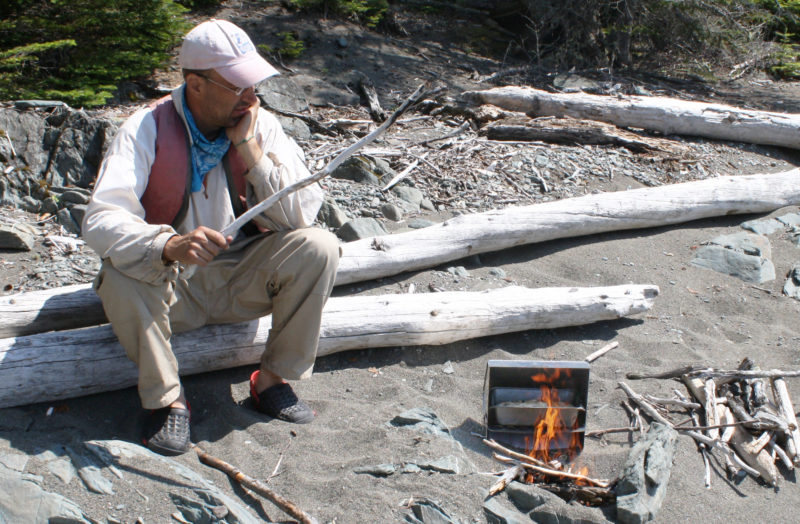 photographs courtesy of the author
photographs courtesy of the authorIf there is one thing that can improve upon a pleasant day on the beach, fresh baked bread might be it.
My wife and I went canoeing on our very first date and I proposed to her while we were on a 72-day canoe trip to Hudson Bay. We continued to canoe-camp after getting married, but now that we have kids, I often feel like we are relearning how to enjoy it. The biggest difference is the amount of time we spend in camp. In addition to hauling a huge dry bag full of painting supplies, board games, and books, we started bringing a reflector oven, plus mixes for baking cookies, cakes, and breads.
I once looked forward to camp sweets just as much as our young daughters do now. Pineapple-cherry dump cake baked in a Dutch oven was a staple of my Boy Scout troop campouts. The recipe was easy: dump a can of pineapples and cherry-pie filling in the Dutch oven, top with a cake mix, put the lid on and cover oven with coals. Dutch ovens can be used to make a wide variety of cakes, pies, and casseroles. Many are cast iron, which is way too heavy to carry on a portage, but we often use a lighter, aluminum one that heats almost as well and doubles as a frying pan.
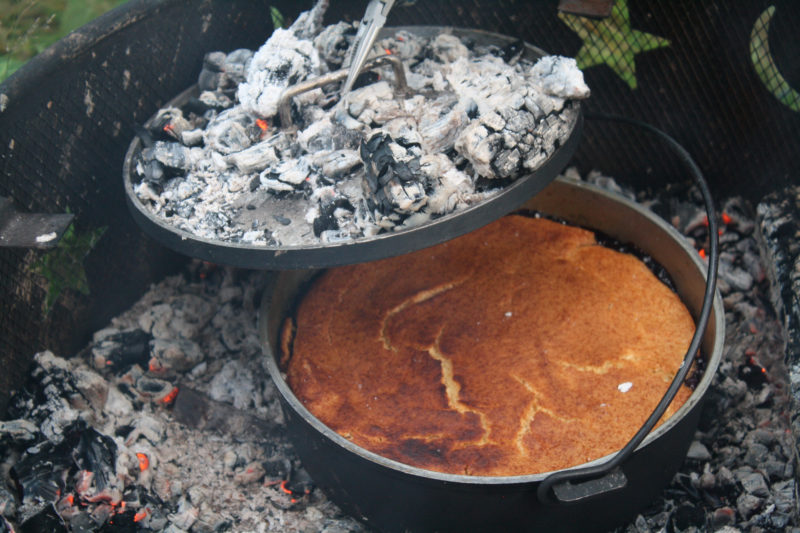
Set in the coals of a fire in a campsite’s steel fire box, an aluminum Dutch oven bakes a blueberry cobbler with the addition of heat from coals set on a lid with a rim.
When I started guiding canoe trips, I learned an easier and lighter baking technique for a one-burner camp stove that bakes with steam. It uses two pots—one that fits inside the other. Place a few pebbles in the bottom of the large pot and cover them with water. Pour the cake, muffin, or bread mix in the small pot and set it inside of the large pot. With the lid on the large pot—tinfoil will do in a pinch—turn the stove to simmer. Add more water before it all boils off and the pot gets damaged. Breads and cakes won’t get a crisp brown crust, but they will always be moist.
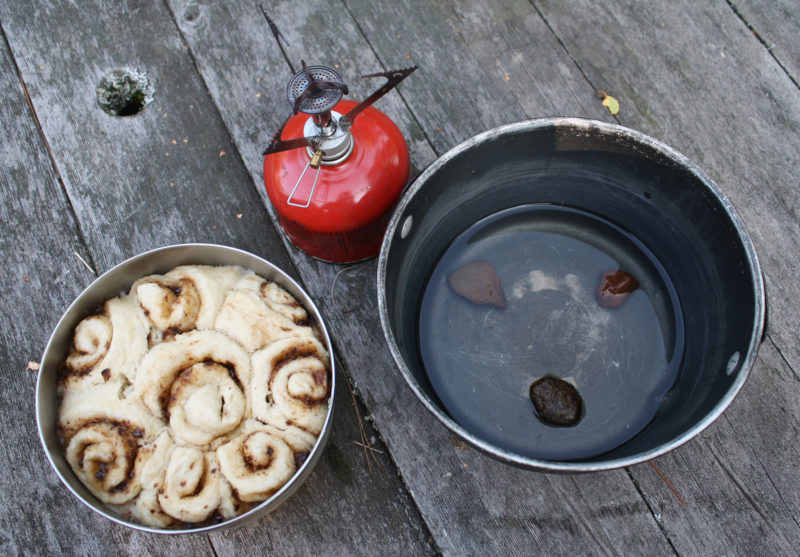
These peanut butter-chocolate rolls were baked using a pot-in-pot method. Three rocks in the larger put elevate the smaller pot to keep boiling water under the smaller pot. Not shown is the pot lid. The rolls aren’t browned, but they’re fully cooked.
Neither of these techniques is as fun or versatile as the reflector oven we’ve been using more recently. Our oven weighs just 17 oz and folds nicely into notebook-sized pouch. The oven is placed close to the fire and uses radiant heat to cook. It’s more versatile than our Dutch oven because it acts like a regular oven—we’re only limited by the size of pan. I’m careful to keep an even fire heat, and I rotate the baking pan to prevent burning. Like all outdoor baking, there’s no temperature control, so I do a knife test occasionally to see if it’s done. Cookies, cakes, and breads have all turned out great, and I’m looking forward to trying my luck roasting stuffed fish.
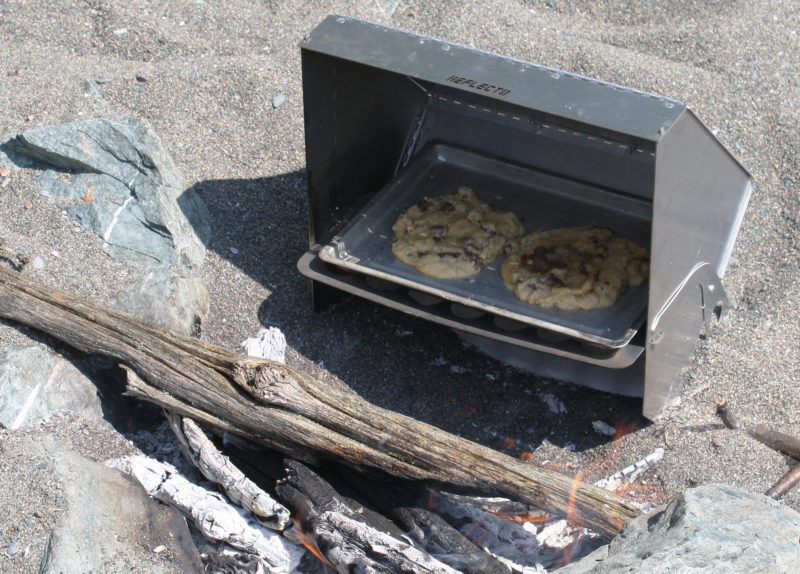
Baking in a reflector oven doesn’t require a large fire. Chocolate-chip cookies are almost ready to eat.
If there’s a downside to the reflector and Dutch ovens, it is that you need a campfire. During dry summers, fire bans would prevent their use. When fires are permitted, many places we camp have established fire rings, and other areas (such as the coast of Lake Superior) have rock or sand beaches where fires can be made that have no lasting fire scars, and wood is plentiful. The camp stove used for the pot-in-pot method aren’t often subject to fire-hazard restrictions.
You don’t need to have kids to have a good excuse to add baking to your camp cuisine. The aroma and taste of fresh-baked cinnamon rolls in the wilderness is something you’ll not soon forget.![]()
Andrew Breckenridge is a geology professor living on Lake Superior in Duluth, MN. His fleet includes four canoes, a sailing dory, and a nearly finished Core Sound 17. His current dream trip is the Inside Passage.
Recipes
We usually just use mixes available at the store or find a recipe online. Here are two of our favorites.
Cinnamon Rolls
These were my go-to dessert on layover days when I guided trips for the Boy Scouts.
biscuit mix
sugar (white or brown)
cinnamon
margarine or butter
Nutella
Stir water into the biscuit to make a firm dough. Add some sugar to the dough. Roll out the dough on a flat surface (like the bottom of a canoe) to around 1/4” thick and coat with sugar, cinnamon, and melted margarine. Cut the dough into 1” strips and roll up. Place the rolls into a greased pan, with ample space for them to expand, and bake. Drizzle with Nutella.
15-year-old Birthday Cake
This is the one and only birthday cake I’ll never forget. It was a surprise cake that was served on my 15th birthday during a 9-day canoe trip on the Bloodvein and Gammon rivers in eastern Manitoba. If nothing else, the recipe proves that being on the trail makes everything taste better and creates great memories.
chocolate cake mix
peanut butter
grape jelly
15 wooden matches
Bake two layers of chocolate cake using the package directions and a round cake pan. Spread peanut butter and jelly over the bottom cake layer. Add the second cake layer, then top with 15 matches. Light quickly, and sing even faster.
You can share your tricks of the trade with other Small Boats Monthly readers by sending us an email.

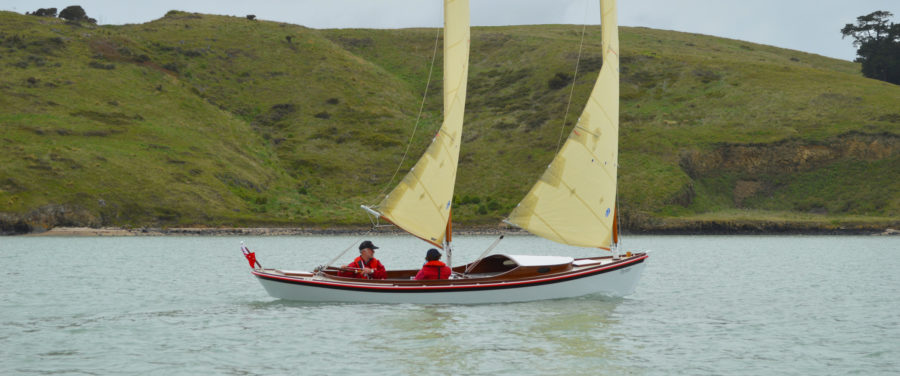
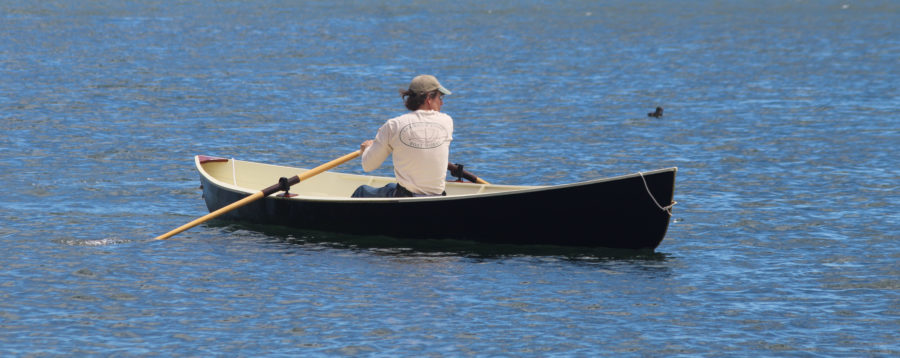

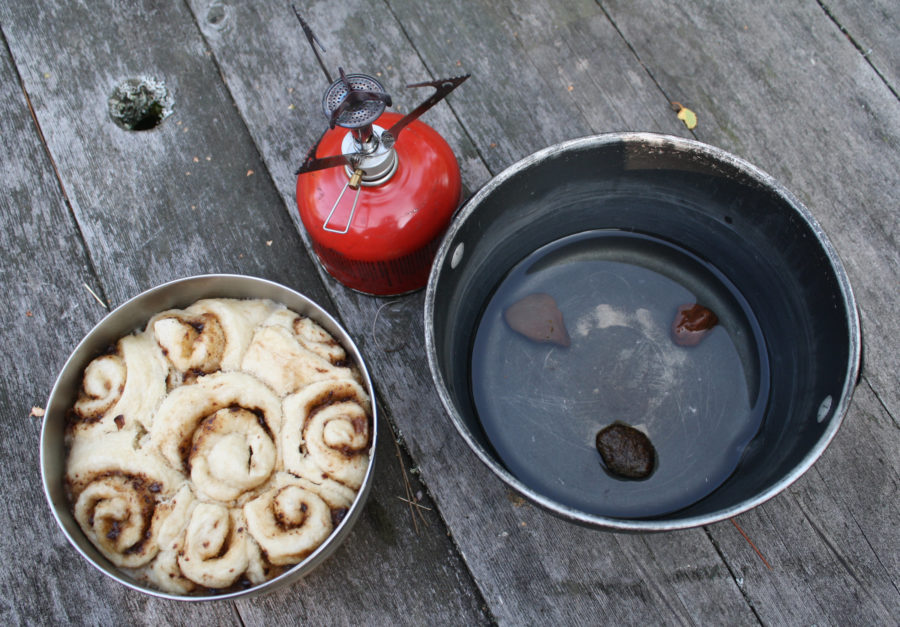
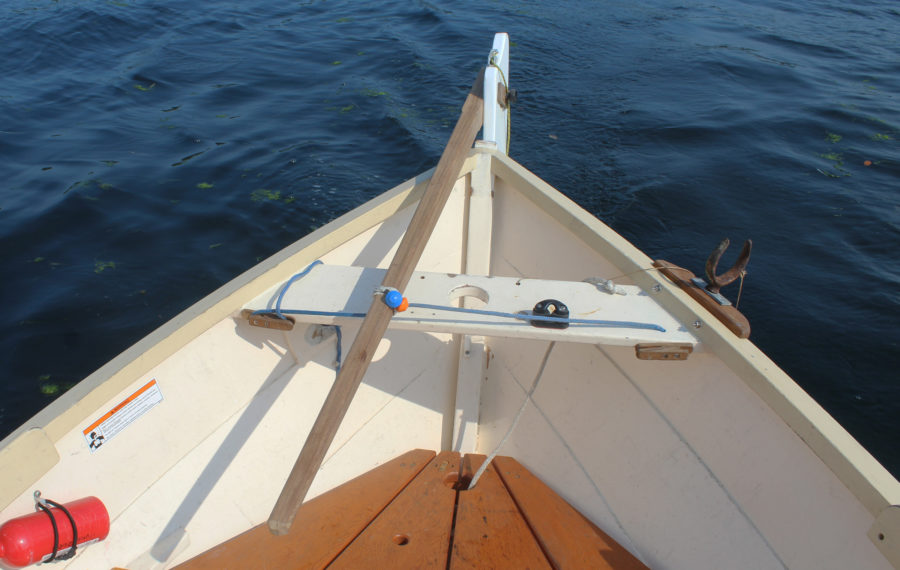
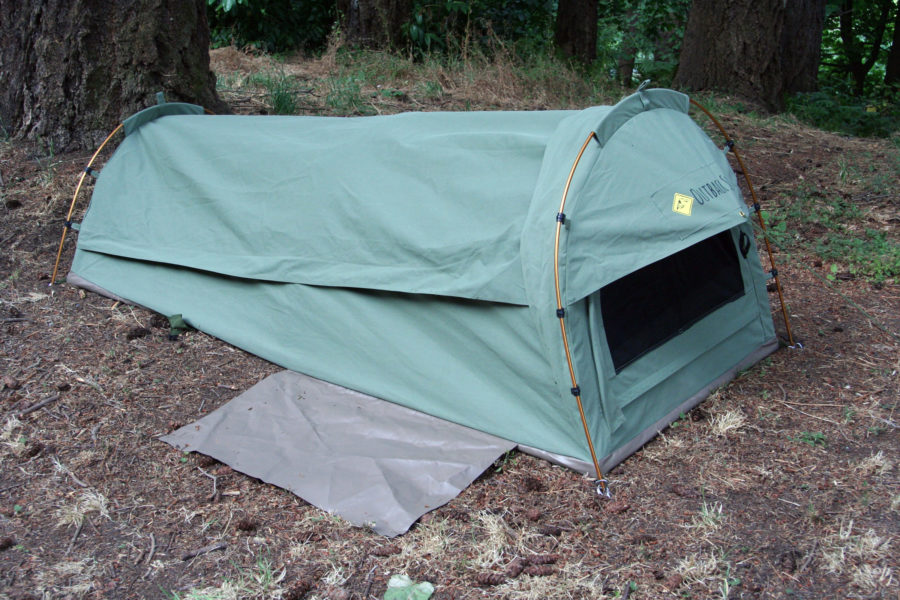
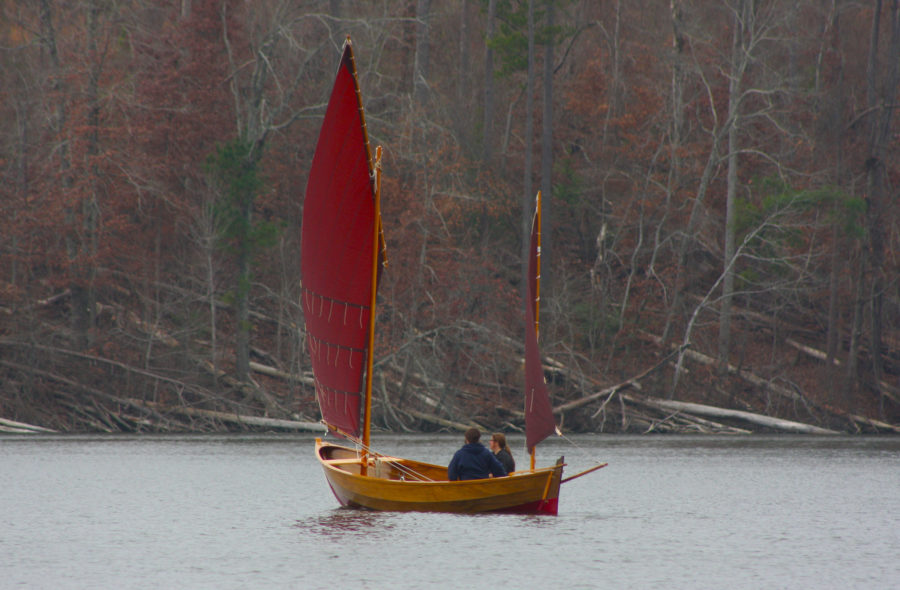
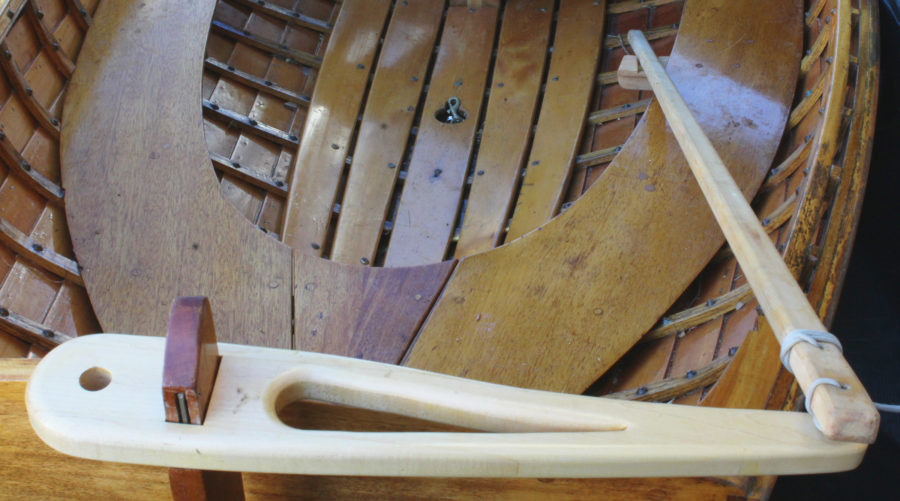
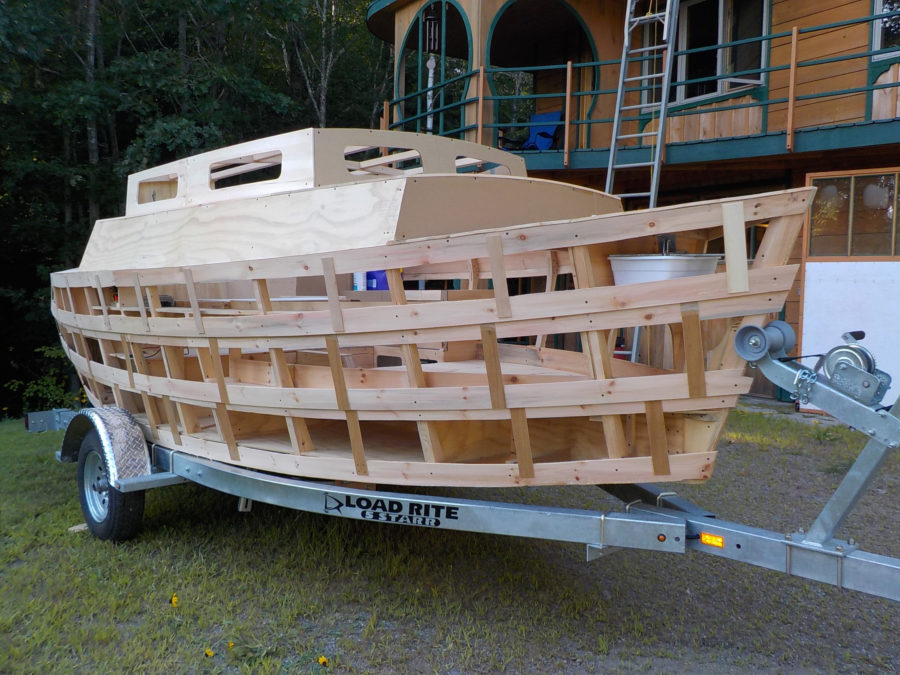
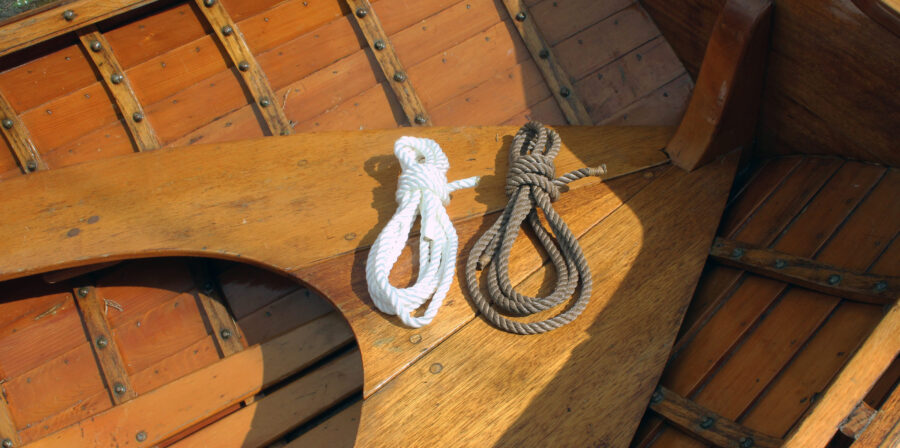
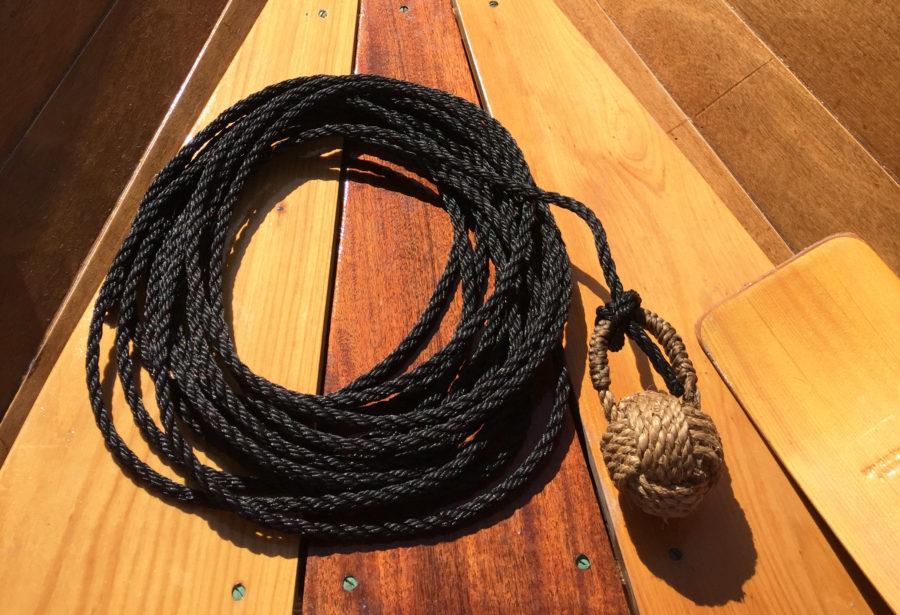
Good article. Brings back memories of my Boy Scout days using the ovens you describe. Carolyn Shearlock publishes The Boat Galley on line. She recommended the Omnia Stove Top Baking Oven.
Just thought I would pass it on as it appears to be a fairly lightweight device that claims to be compatible with camp stoves. Full disclosure, I have never used one nor do I have stock in the company, but it does look interesting.
A kayaking buddy used to bring an aluminum Dutch oven on trips. He always rehearsed the project at home before the trip, which let him know precisely how many charcoal briquets he would need to go under the oven, and how many for the lid. At Rugged Point (Vancouver Island) one time he baked a perfect apple cinnamon coffee cake that was one of the best treats I’ve ever tasted. Of course it helped that we got to enjoy this in a campground on a beautiful beach.